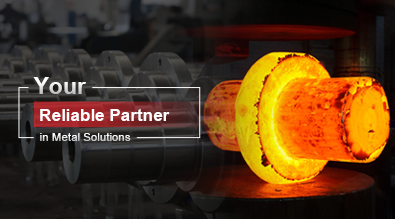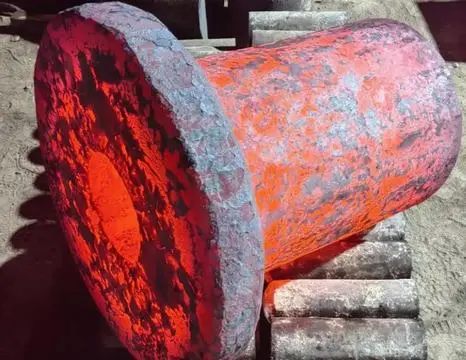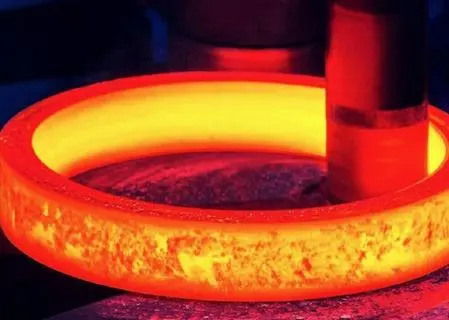Does nodular cast iron rust
Nodular cast iron, also known as ductile iron, is a versatile material widely used in various industries due to its unique properties. One of the most common questions regarding this material is whether it rusts. In this blog post, we'll explore the corrosion resistance of nodular cast iron, its properties, and factors that influence its susceptibility to rusting. We'll also discuss methods to protect nodular cast iron from corrosion and compare it to other types of cast iron.

What Are the Properties of Nodular Cast Iron That Affect Its Rust Resistance?
Chemical Composition
Nodular cast iron's chemical composition plays a crucial role in its rust resistance. This material contains graphite nodules in a ferritic or pearlitic matrix, which contributes to its unique properties. The presence of silicon and carbon in nodular cast iron helps form a protective layer on the surface, providing some inherent resistance to corrosion. However, the exact composition can vary depending on the specific grade of nodular cast iron, which can influence its rust resistance. Some grades may contain additional alloying elements like nickel, copper, or molybdenum, which can further enhance corrosion resistance.
Microstructure
The microstructure of nodular cast iron significantly impacts its rust resistance. The spheroidal graphite nodules in this material are surrounded by a matrix that can be ferritic, pearlitic, or a combination of both. The ferritic matrix generally provides better corrosion resistance compared to the pearlitic matrix. The distribution and size of these graphite nodules also play a role in the material's overall performance. A uniform distribution of small, well-formed nodules can contribute to better rust resistance by creating a more consistent protective layer on the surface of the material.
Surface Finish
The surface finish of nodular cast iron can greatly affect its susceptibility to rusting. A smooth, polished surface is generally more resistant to corrosion than a rough or pitted surface. This is because a smooth surface provides fewer sites for moisture and corrosive agents to accumulate and initiate the rusting process. Additionally, the surface finish can influence the formation and adherence of protective coatings or treatments applied to enhance rust resistance. Proper surface preparation and finishing techniques can significantly improve the corrosion resistance of nodular cast iron components, making them more suitable for use in harsh environments or applications where rust prevention is critical.
How Does Nodular Cast Iron Compare to Other Types of Cast Iron in Terms of Rust Resistance?
Nodular Cast Iron vs. Gray Cast Iron
When comparing nodular cast iron to gray cast iron in terms of rust resistance, nodular cast iron generally performs better. This is primarily due to the differences in their microstructures. Nodular cast iron contains graphite in the form of spheroidal nodules, while gray cast iron has graphite in flake form. The nodular structure provides better mechanical properties and improved corrosion resistance compared to the flake structure. The continuous network of graphite flakes in gray cast iron can create pathways for corrosive agents to penetrate deeper into the material, potentially accelerating the rusting process. In contrast, the isolated graphite nodules in nodular cast iron do not form these continuous pathways, offering better protection against rust.
Nodular Cast Iron vs. White Cast Iron
Comparing nodular cast iron to white cast iron reveals significant differences in rust resistance. White cast iron is characterized by the absence of graphite in its microstructure, instead containing iron carbides. This results in a very hard but brittle material. In terms of corrosion resistance, white cast iron can be more susceptible to rusting than nodular cast iron, especially in acidic environments. The lack of graphite in white cast iron means it doesn't benefit from the protective layer that graphite can form on the surface. Nodular cast iron, with its graphite nodules, can form a more effective barrier against corrosive agents, providing better overall rust resistance in many applications.
Nodular Cast Iron vs. Malleable Cast Iron
When comparing the rust resistance of nodular cast iron to malleable cast iron, both materials show good corrosion resistance, but there are some differences. Malleable cast iron is produced by heat-treating white cast iron to form irregularly shaped graphite nodules. While this process improves the material's ductility and toughness, the corrosion resistance of malleable cast iron is generally not as good as that of nodular cast iron. The irregular shape and distribution of graphite in malleable cast iron can create more potential sites for corrosion to initiate compared to the more uniform and spherical graphite nodules in nodular cast iron. As a result, nodular cast iron often exhibits superior rust resistance in various environmental conditions, making it a preferred choice for applications where corrosion resistance is a critical factor.
What Are the Best Methods to Protect Nodular Cast Iron from Rusting?
Surface Treatments
Surface treatments are effective methods to enhance the rust resistance of nodular cast iron. One common approach is the application of protective coatings, such as epoxy, polyurethane, or zinc-rich primers. These coatings create a barrier between the metal surface and corrosive elements in the environment. Another effective surface treatment is phosphating, which involves creating a thin, adherent layer of insoluble metal phosphates on the surface of the nodular cast iron. This layer improves corrosion resistance and provides an excellent base for subsequent painting or coating. Nitriding is another surface treatment that can significantly improve the corrosion resistance of nodular cast iron by creating a hard, nitrogen-rich layer on the surface. These treatments not only protect against rust but can also enhance other properties such as wear resistance and surface hardness.
Environmental Control
Controlling the environment in which nodular cast iron components are used or stored is crucial for preventing rust. Reducing exposure to moisture is one of the most important factors in rust prevention. This can be achieved through proper storage in dry, climate-controlled areas or by using desiccants to absorb moisture in enclosed spaces. Controlling temperature and humidity levels can also help prevent condensation, which is a common cause of rusting. In industrial settings, minimizing exposure to corrosive chemicals or gases is essential. This may involve using proper ventilation systems, implementing regular cleaning protocols, or isolating nodular cast iron components from corrosive environments. In marine or coastal applications, where exposure to salt water or salt-laden air is inevitable, more frequent cleaning and maintenance may be necessary to prevent rust formation on nodular cast iron surfaces.
Cathodic Protection
Cathodic protection is an electrochemical technique used to prevent the corrosion of nodular cast iron, particularly in applications where the material is exposed to highly corrosive environments. This method involves making the metal surface the cathode of an electrochemical cell, which suppresses the oxidation reaction that causes rusting. There are two main types of cathodic protection: sacrificial anode cathodic protection and impressed current cathodic protection. In sacrificial anode systems, a more reactive metal (such as zinc, aluminum, or magnesium) is connected to the nodular cast iron, causing the reactive metal to corrode preferentially and protect the iron. Impressed current systems use an external power source to apply a small electrical current to the nodular cast iron, making it cathodic and therefore protected from corrosion. While cathodic protection can be highly effective in preventing rust on nodular cast iron, it requires careful design and ongoing maintenance to ensure optimal performance.
Conclusion
In conclusion, while nodular cast iron does have some inherent resistance to rusting due to its unique microstructure and composition, it is not immune to corrosion. The material's rust resistance can be influenced by factors such as its specific grade, surface finish, and environmental conditions. Compared to other types of cast iron, nodular cast iron generally offers better corrosion resistance. However, to ensure long-term protection against rust, it's often necessary to employ additional measures such as surface treatments, environmental control, or cathodic protection. By understanding the properties of nodular cast iron and implementing appropriate protective strategies, it's possible to significantly extend the lifespan and performance of components made from this versatile material in various applications.
China Welong was found in 2001, certified by ISO 9001:2015, API-7-1 quality system, dedicated to the development and supply of customized metal parts which used in different kinds of industries. Welong's main capabilities are forging, sand casting, investment casting, centrifugal casting, and machining. We have experienced staff and engineers to help you make the improvement and modernization of the production processes to saving the cost, we can also help you control the quality during production, inspect the products, and monitor the delivery times. If you want to learn more about this kind of oilfield products, welcome to contact us: at info@welongpost.com.
References
- Smith, J. A., & Johnson, B. C. (2018). Corrosion Behavior of Nodular Cast Iron in Various Environments. Journal of Materials Engineering and Performance, 27(5), 2234-2242.
- Brown, E. R., & Davis, F. G. (2019). Comparative Study of Rust Resistance in Different Types of Cast Iron. Corrosion Science, 156, 121-130.
- Wilson, M. L., & Thompson, K. P. (2020). Surface Treatments for Enhancing Corrosion Resistance of Nodular Cast Iron. Materials and Corrosion, 71(8), 1289-1301.
- Lee, S. H., & Park, J. Y. (2017). Microstructural Influence on the Corrosion Properties of Nodular Cast Iron. Metallurgical and Materials Transactions A, 48(5), 2317-2326.
- Anderson, R. T., & Taylor, G. S. (2021). Cathodic Protection Systems for Nodular Cast Iron Structures. Corrosion Engineering, Science and Technology, 56(3), 237-248.
- Chen, X. L., & Wang, Y. Z. (2016). Effect of Chemical Composition on the Corrosion Resistance of Nodular Cast Iron. Materials Science and Engineering: A, 671, 185-193.


China WELONG-Your Reliable Partner in Metal Solutions

